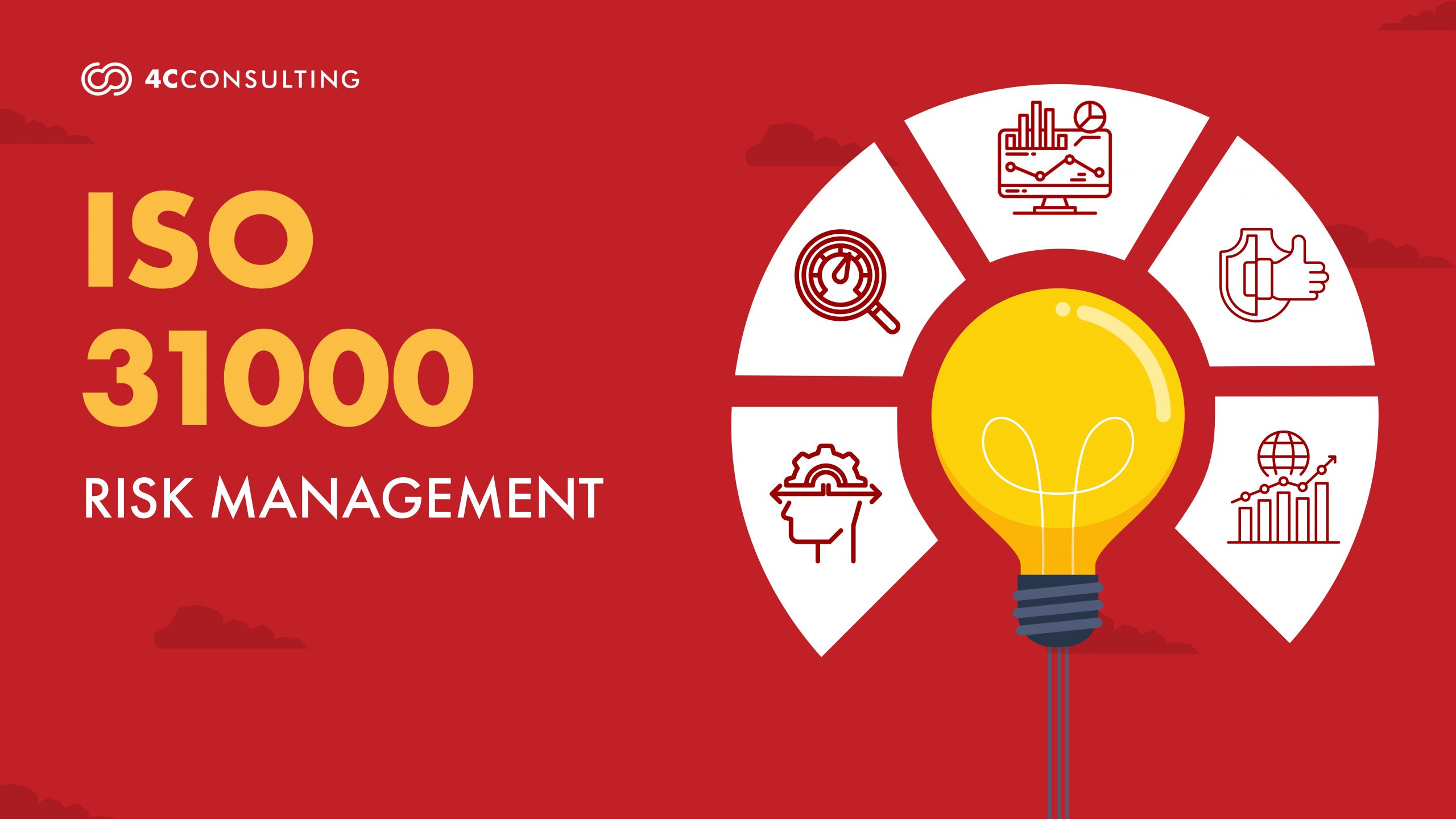
ISO 31000:2018 A Comprehensive Guide to Effective Risk Management
26th Apr, 2024
In today’s unpredictable business environment, mere adaptability is insufficient; proactive risk management is vital. Adopting ISO 31000 can lead organizations to significantly reduce their risk-related losses by up to 40%, highlighting the importance of a structured approach to risk management for long-term success. ISO 31000 is more than a set of guidelines—it is a carefully constructed framework designed to bolster operational resilience and ensure financial stability. This framework equips businesses of all sizes and across various industries with the tools necessary to effectively identify, evaluate, and manage risks, empowering them to confidently face uncertainties.
.
What is ISO 31000: 2018?
ISO 31000: 2018, crafted by the International Organization for Standardization (ISO), stands as the global benchmark for risk management principles and best practices. The standard introduces a comprehensive framework that enables organizations to identify, assess, manage, and monitor risks. Adapting to the evolving risk management landscape, ISO 31000 supports organizations in building a robust risk management process that aligns with their strategic goals and promotes a culture aware of risks. It underscores the significance of proactive risk management within governance frameworks and decision-making processes, equipping organizations to adeptly manage and adapt to uncertainties.
.
Key Elements of ISO 31000: 2018
The standard details the principles, framework, and process for risk management, focusing on the following essential aspects:
- Principles of Risk Management’s 31000 outlines eleven essential principles that serve as the backbone for effective risk management. These include accountability, integration, transparency, and continual improvement. By embedding these principles into daily operations, organizations can guide their decision-making processes and cultivate behaviors that support a proactive risk management environment.
- Framework for Risk Management: The framework provided by ISO 31000 is designed to be both flexible and scalable, accommodating the diverse needs and specific circumstances of different organizations. It allows entities to customize their risk management practices to effectively confront distinct challenges and achieve their strategic objectives.
- Process of Risk Management: ISO 31000 describes a detailed, systematic process for managing risks, which is segmented into several key stages. This structured process ensures that risk management efforts are comprehensive and aligned with the organization’s strategic goals:
- Risk Identification: This step involves pinpointing potential risks that might affect the organization’s ability to meet its objectives. It takes into account a variety of sources, including internal processes and external events, to compile a broad spectrum of potential threats.
- Risk Assessment: Once risks are identified, this phase assesses their likelihood and potential impact. This assessment helps in understanding the severity of each risk, thereby prioritizing them based on how they might influence organizational goals.
- Risk Treatment: In this stage, organizations determine the most suitable risk response strategies. Choices include mitigating the risk to reduce its likelihood or impact, transferring the risk to another party, avoiding the risk altogether, or accepting the risk if the cost of mitigation is disproportionate to the risk itself. The chosen strategy should align with the organization’s overall risk appetite and resource availability.
- Risk Communication: Effective communication is crucial for ensuring that all stakeholders are aware of the risks and the steps being taken to manage them. This transparency supports informed decision-making and fosters a coordinated approach to managing risks.
- Risk Monitoring and Review: Ongoing monitoring and periodic reviews of the risk management process are essential to ensure its effectiveness. This step involves regular assessments to detect any changes in the organization’s risk profile and adapting the risk management strategies as necessary to maintain alignment with organizational objectives.
By adhering to these structured elements and processes, organizations can establish a robust risk management program that not only protects them against potential threats but also enhances their ability to seize opportunities.
.
Key Steps to Implement ISO 31000: 2018
To effectively roll out ISO 31000, organizations need to undertake a series of strategic steps that ensure a comprehensive adoption of the standard:
- Gap Analysis: Begin with a comprehensive evaluation to pinpoint areas where current risk management practices fall short of ISO 31000 standards. This assessment helps in creating a focused strategy to address these shortcomings and integrate the necessary adjustments.
- Establish a Policy and Objectives: Craft a detailed policy that specifies the organization’s dedication to adhering to ISO 31000. This policy should be supported by well-defined objectives that are specific, measurable, attainable, relevant, and time-bound (SMART), reflecting the organization’s commitment to continuous risk management enhancement.
- Develop an ISO 31000:2018 Manual: Compile a manual that meticulously documents all processes and procedures required under ISO 31000. This manual should serve as a guide for how the organization intends to uphold and manage these standards consistently.
- Train Employees: It’s critical to educate all personnel on the ISO 31000 standards, ensuring they understand how these standards apply to their specific roles within the organization. The training program should cover the risk management policy, procedures, and any relevant aspects of the standard that affect their work.
- Establish Document Control: Set up a robust document control system to manage all documentation associated with ISO 31000. This ensures that only the most updated and approved versions of documents are in circulation and used.
- Implement Internal Auditing: Regular internal audits should be conducted to verify the effective implementation of ISO 31000 standards. Auditors must be trained properly and should operate independently from the processes they are auditing to maintain objectivity.
- Monitor and Measure Processes: Implement ongoing monitoring and periodic evaluation of the risk management processes to assess their effectiveness. This step is vital for ensuring that the organization’s risk management practices remain compliant with ISO 31000 and continue to function as intended.
- Continuously Improve: Adopting a mindset of continuous improvement is crucial under ISO 31000. Regularly review and refine the risk management system to boost its efficiency and relevance to the organizational goals and changing risk landscapes.
- Obtain Certification: Although ISO 31000 itself does not require certification; organizations often seek to get certified to demonstrate their compliance with international standards. After thoroughly implementing ISO 31000, an organization may choose to undergo an independent audit to validate its adherence to these practices.
.
Benefits of Implementing ISO 31000
- Enhanced Risk Awareness: ISO 31000 fosters a culture of risk awareness throughout the organization. By establishing a comprehensive framework for identifying, assessing, and managing risks, organizations become more proactive rather than reactive. This heightened awareness helps anticipate potential threats and opportunities, leading to better-preparedness and strategic decision-making.
- Dynamic Risk Management: The framework provided by ISO 31000 is flexible and dynamic, allowing organizations to adapt their risk management strategies as the external and internal environments change. This adaptability is crucial in today’s fast-paced world, where new risks can emerge rapidly and unpredictably.
- Strategic Decision Making: By integrating risk management into the strategic planning process, ISO 31000 helps organizations align their risk appetite with their business goals. Decision-makers are equipped with crucial insights into risk-reward trade-offs, leading to more informed and effective strategy formulation.
- Reduced Losses and Improved Resource Allocation: Effective risk management according to ISO 31000 principles can reduce the incidence and impact of negative events. Organizations can allocate resources more effectively, prioritizing areas with the greatest need or potential for return on investment, thus optimizing financial and operational performance.
- Improved Efficiency: Implementing ISO 31000 streamlines risk management processes by providing clear guidelines and standards. This standardization reduces the time and resources spent on managing risks and eliminates redundancies in risk handling procedures, thus improving overall operational efficiency.
- Greater Stakeholder Confidence: Compliance with a globally recognized risk management standard reassures stakeholders, including investors, customers, and regulatory bodies, about the organization’s commitment to managing risk. This confidence can translate into improved relationships, increased customer loyalty, and a stronger reputation.
- Better Compliance: ISO 31000 helps organizations meet legal and regulatory requirements related to risk management. By aligning risk management processes with an internationally accepted standard, companies can more easily demonstrate compliance with various regulations, avoiding potential fines and penalties.
- Continuous Improvement: ISO 31000 emphasizes continual improvement, encouraging organizations to regularly review and refine their risk management processes. This not only keeps the risk management strategies relevant and effective but also fosters a culture of ongoing development and learning within the organization.
ISO 31000: 2018 is an indispensable standard for effective risk management, crucial for organizations aiming to navigate the complexities of the modern business environment. By implementing this standard, organizations not only enhance their ability to manage risks proactively but also bolster their overall resilience and decision-making capabilities. The structured framework and comprehensive process outlined in ISO 31000 enable organizations to systematically address risks, ensuring they can anticipate, assess, and adapt to challenges with confidence. Furthermore, adopting ISO 31000 fosters a culture of continuous improvement and risk-awareness, vital for maintaining competitive advantage and operational excellence. By embracing the principles and practices of ISO 31000, organizations can safeguard their assets, optimize outcomes, and forge robust pathways toward sustainable growth and success.
.
HOW 4C CAN HELP YOU IMPLEMENT ISO 31000: 2018 IN YOUR ORGANIZATION?
Partner with 4C Consulting Private Limited to streamline your organization’s adoption of ISO 31000. Our seasoned consultants specialize in Risk Management, offering tailored guidance for seamless ISO 31000 implementation. With over 15+ years of experience, 10,000+ training hours, and 50+ workshops conducted, our team equips you with the necessary knowledge and skills for successful ISO 31000 adoption. From comprehensive risk identification and analysis to providing effective risk mitigation strategies, we prioritize organizational resilience. Choosing 4C Consulting ensures not only regulatory compliance but also enhances your brand’s reputation and stakeholder trust. Contact us now to embark on your ISO 31000 journey and elevate your risk management practices today.
